Affordable US Road Trip Guide: Travel the USA on a Budget
Ever stared at your bank account, then at a map of America, and thought, “There’s no way I can afford this”? I’ve been there too. But here’s the truth: you absolutely can budget road trip America without emptying your savings account.
I’m about to show you exactly how to do affordable US road trip planning on a budget that won’t make your wallet weep. No trust funds required, just smart planning and a few insider tricks I’ve learned from 12,000+ miles on American highways.
Think hostels are only for Europe? Wrong. Believe you need a fancy RV to sleep comfortably? Nope. Convinced dining out will drain your funds? I’ve got news for you.
But first, let me tell you about the night I spent $7 total in one of America’s most expensive cities, and why it changed everything I thought I knew about budget travel…
Planning Your Route for Maximum Value
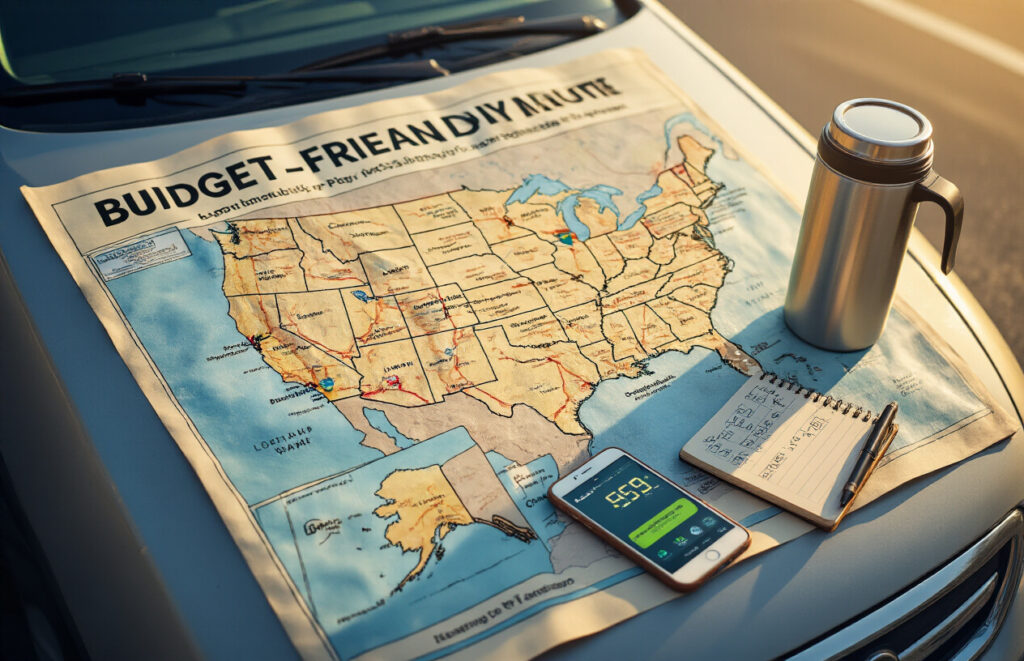
Iconic American roads that won’t break the bank
The open road doesn’t have to empty your wallet. Route 66 might be famous, but portions of this historic highway offer free attractions and small-town charm without tourist markup. The Blue Ridge Parkway winds through Virginia and North Carolina without a single toll booth—just stunning Appalachian vistas that cost absolutely nothing.
Looking for something less traveled? The Natchez Trace Parkway stretches 444 miles from Mississippi to Tennessee with zero commercial development. Translation: no tourist traps begging for your dollars every five miles.
Want coastal views? Skip the expensive California Highway 1 crowds and try Oregon’s Highway 101 instead. Same dramatic ocean scenery, way fewer expensive tourist stops.
Off-season travel advantages
Summer road trips are ridiculously overrated. Hotels jack up prices, attractions are packed, and you’ll spend half your time in traffic with other summer travelers.
Hit the road in October instead. National parks? Half empty. Hotel rates? Often slashed by 30-40%. Weather? Usually perfect in many regions.
Winter road-tripping through the Southwest means temperatures in the 60s instead of 110°, plus rates so low you might think there’s a pricing error. Just check ahead for seasonal closures.
Spring offers that sweet spot before Memorial Day when everything’s open but nobody’s there yet. National parks vs. tourist traps
Let’s get real about entrance fees. A $80 America the Beautiful pass gets you into EVERY national park for a full year. That’s less than one day at a theme park.
Tourist traps scream for attention with flashy billboards and gift shops. National parks just sit there being magnificent. Which sounds like better value?
Skip the $30 observation decks and “world’s largest” whatever. Instead, hike to natural overlooks where the views are actually better and 100% free.
Balancing must-see attractions with hidden gems
The smartest budget travelers use this formula: one iconic attraction, two lesser-known spots.
When visiting Mount Rushmore, balance it by exploring nearby Custer State Park and Wind Cave National Park. You’ll get three experiences while everyone else overpays for just one.
Ask locals this exact question: “Where would you take your own family that doesn’t cost much?” Their answers are gold.
Small town museums often charge $5 or nothing at all, yet offer fascinating glimpses into local history you won’t find anywhere else. City parks, state forests, and wildlife refuges deliver experiences just as memorable as their famous counterparts—without the famous price tags.
Budget-Friendly Accommodations
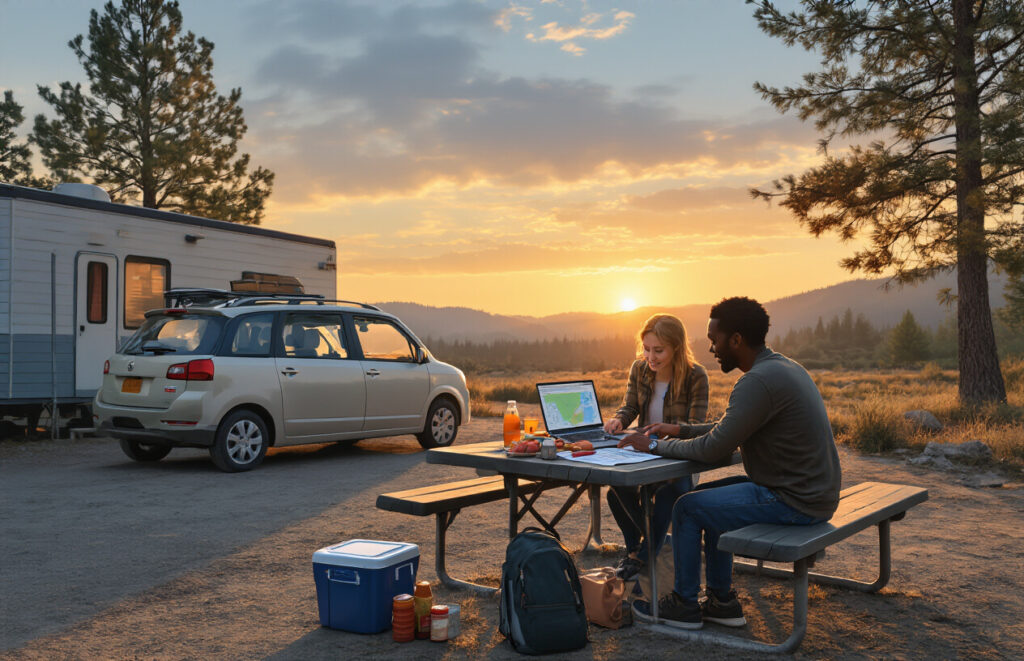
A. Camping options across different states
Camping is your budget MVP for cross-country travel. National Forests offer free dispersed camping (14- day limit usually) with zero amenities but maximum savings. National Parks have campsites from $20-30 per night – not free but way cheaper than hotels, plus you’re already where you want to be for sightseeing.
State parks? Hidden gems. Often half the price of National Parks with fewer crowds. Many have showers, which you’ll be desperate for after three days on the road.
KOA campgrounds cost more ($30-45) but give you amenities like Wi-Fi, laundry, and sometimes pools. Perfect for when you need to recharge everything (including yourself).
Download the Dyrt or iOverlander apps – they’ll show you free camping spots other travelers have found. Just read recent reviews so you don’t end up somewhere sketchy.
B. Hostel networks in major cities
Think hostels are just for Europe? Nope. American hostels save you major cash in expensive cities. In places like San Francisco, NYC, or Chicago, you’ll pay $30-50 for a dorm bed versus $200+ for a basic hotel room.
HI USA (Hostelling International) runs clean, well-located hostels in major cities. Their membership ($20/year) gets you discounts nationwide.
Beyond saving money, hostels have kitchens where you can cook instead of eating out. Plus, you’ll meet other travelers who’ll share tips about where you’re heading next.
C. Alternative lodging with Couchsurfing and home exchanges
Want completely free accommodation? Couchsurfing connects you with locals offering spare couches or rooms. The catch? You need to build a profile with references before your trip so hosts trust you.
Home exchanges work great for longer trips. If you own a home, swap it with someone in another part of the country. Sites like HomeExchange charge annual membership fees ($150-ish) but then exchanges are free.
These options aren’t just cheap—they give you local connections. Your hosts will tell you which tourist traps to skip and which hole-in-the-wall joints serve the best food at half the price.
D. Discount hotel strategies and loyalty programs
Sometimes you just need a real bed. For those nights, hotel strategies are crucial.
Book hotels in business districts on weekends when rates plummet. Use apps like HotelTonight for last- minute deals when you’re too tired to drive further.
Sign up for every hotel loyalty program before your trip—even if you’ll only stay once or twice with each chain. Many offer instant perks to new members.
Choice Hotels and Motel 6 aren’t glamorous but have locations everywhere and frequent promotions like “stay twice, get one night free.” That adds up on a cross-country journey.
E. Safe overnight parking for car sleeping
Let’s be honest—sometimes you’ll sleep in your car. It’s free and convenient.
Walmart parking lots are the classic choice. Most (not all) allow overnight parking. Always check with the manager first.
Cracker Barrel, Cabela’s, and Bass Pro Shops typically allow overnight parking too. They’re usually quieter than Walmart.
Rest areas work in some states but are illegal for overnight stays in others. Research state laws before your trip.
For safety: park under lights, near other RVs if possible, arrive late, leave early, and never advertise that you’re sleeping inside. Use window covers for privacy and keep doors locked. Use apps like iOverlander to find spots other travelers recommend as safe. Trust your gut. If a place feels sketchy, it probably is. Drive to the next option.
Transportation and Fuel Savings
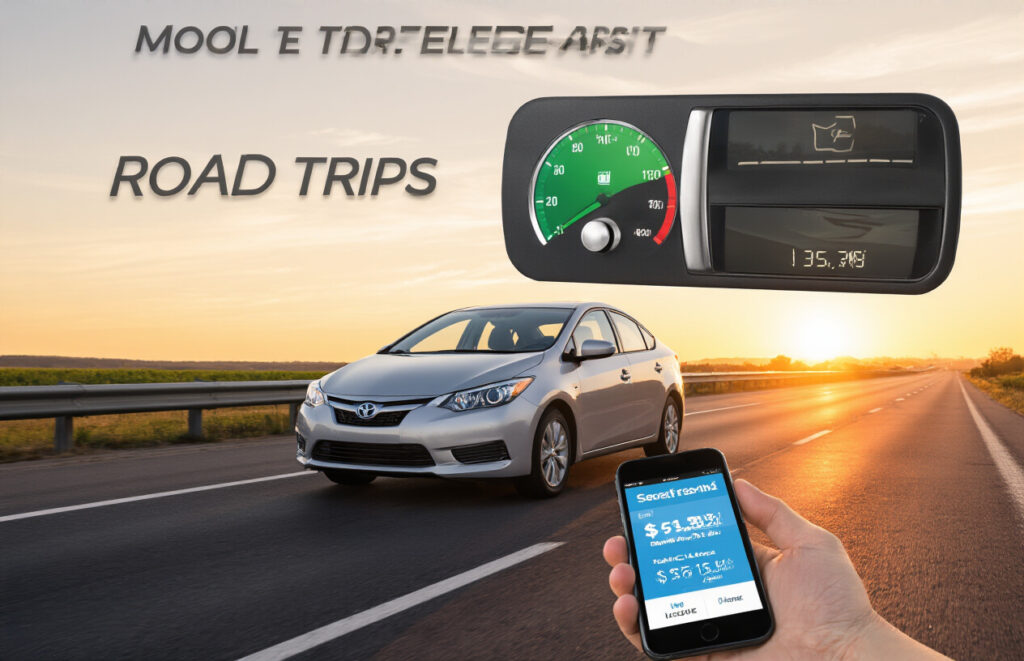
A. Choosing the right vehicle for economy
Your car choice can make or break your budget road trip. Gas-guzzling SUVs might be roomy, but they’ll drain your wallet faster than a Vegas slot machine.
For solo travelers or couples, compact cars are your best friend. They’re fuel-efficient champions that can hit 35-40 mpg on highways. A Toyota Prius or Honda Civic will save you hundreds compared to that tempting Jeep Wrangler.
Already own a gas-guzzler? Consider renting! A week-long economy car rental often costs less than the extra fuel you’d burn in your regular ride.
Numbers don’t lie:
| Vehicle Type | Avg MPG (Highway) | Fuel Cost for 3,000 miles |
| Compact Car | 38 mpg | $250-300 |
| Midsize Sedan | 25 mpg | $300-350 |
| SUV | 32 mpg | $380-450 |
- Gas price apps and fuel-saving techniques
The days of driving around searching for cheap gas are over. Apps like GasBuddy and Waze show real- time prices at stations ahead of you. I’ve saved up to 40 cents per gallon just by driving an extra half-mile off the highway.
Your driving habits matter too. The sweet spot for fuel efficiency is 55-65 mph. Every 5 mph over 50 can reduce your fuel economy by 7%.
Quick tips that actually work:
Use cruise control on highways
Turn off the AC when possible (below 55 mph, open windows are more efficient)
Don’t idle for more than 30 seconds
Keep tires properly inflated (can improve MPG by 3%)
Remove roof cargo when not needed (reduces drag)
B. Vehicle maintenance essentials to prevent costly breakdowns
Nothing destroys a budget faster than a breakdown in the middle of nowhere.
Before hitting the road, spend $50-100 on a basic tune-up. Change your oil, replace air filters, and check all fluids. Trust me, preventative maintenance costs pennies compared to roadside repairs.
Pack these must-haves:
Spare tire (know how to change it!)
Jumper cables
Basic tool kit
Coolant and oil
Tire pressure gauge
Get your battery tested if it’s over 3 years old. Battery replacement at your local shop: $100. Emergency replacement at a remote service station: $250+.
C. Carpooling opportunities to share expenses
Solo road trips are freeing, but splitting costs with others can cut expenses in half.
Websites like ShareYourRide and Facebook travel groups connect travelers heading the same direction. I’ve met amazing people and saved $600 on a cross-country trip by splitting gas, hotel rooms, and even rental car costs.
Just be smart about it:
Video chat before meeting
Share driving plans with friends/family
Have a clear money agreement upfront
Discuss music, food stops, and driving shifts beforehand
Even one extra traveler cuts your per-person costs by roughly 40% when you factor in all expenses. Three travelers? You’re looking at savings of 60% or more compared to going solo.
Eating Well Without Overspending
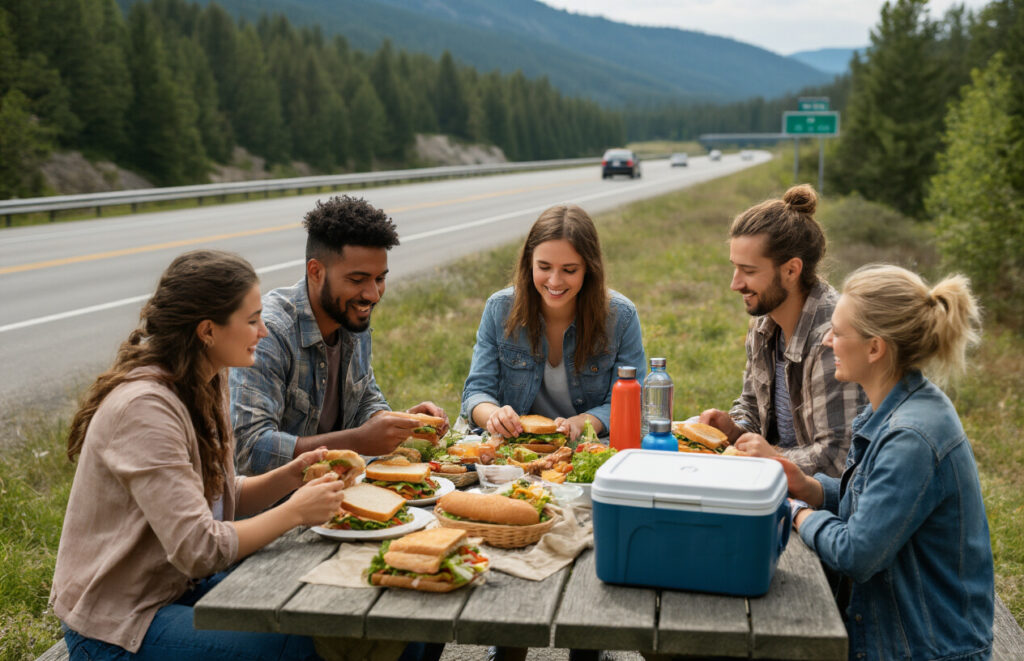
A. Grocery shopping and cooler management
Eating out three times a day will drain your road trip budget faster than a gas-guzzling RV. The solution? A good cooler and smart grocery shopping.
Invest in a quality cooler (Coleman or Igloo will do just fine) and refreeze ice packs at hotel stops. When grocery shopping, hit up Aldi, Trader Joe’s, or local discount grocers every 3-4 days. Stick to basics that won’t spoil easily – peanut butter, bread, fruit, carrots, hummus, and sandwich fixings.
Pro tip: Download the Flashfood app to score massive discounts on food nearing its sell-by date. I once grabbed $40 worth of premium deli meats for $12 in Colorado!
Organize your cooler with a simple system – drinks on one side, perishables on the other. And always keep it in the car, not the trunk, when driving through hot states. Trust me, warm yogurt is nobody’s friend.
B. Finding affordable local eateries
Skip the highway exit restaurants where prices are jacked up for travelers. Drive 5-10 minutes into town centers where locals eat.
The best budget-friendly spots? Look for:
Diners with packed parking lots before 9am
Food trucks (especially in Austin, Portland, and Nashville)
College town eateries (massive portions, student-friendly prices)
The “too good to be true” method never fails: ask gas station attendants where they eat lunch. That’s how I found a $7 plate lunch in Hawaii that put $30 tourist traps to shame.
C. Cooking equipment for roadside meal preparation
You don’t need a mobile kitchen to eat well on the road. Pack these essentials:
Small propane camp stove ($25 at Walmart)
One good cast iron skillet
Collapsible silicone bowls and cups
Swiss Army knife with can opener
Reusable cutlery set
My road trip game-changer? A $15 electric kettle that plugs into your car’s 12V outlet. It boils water for oatmeal, ramen, or coffee while you’re driving.
For roadside lunches, picnic areas at state lines often have grills and tables. National forests usually allow cooking at designated spots – perfect for a sunset dinner after a day of driving.
D. Food festivals and farmers markets worth the stop
Planning your route around food events gives you both entertainment and affordable eating. Some budget-friendly food destinations:
Maine’s wild blueberry festivals (August)
New Mexico’s green chile harvest celebrations (September)
Gilroy Garlic Festival in California (July)
Farmers markets are road trip gold mines. Saturday mornings in almost any town mean local producers
selling at prices lower than supermarkets. The Boulder and Santa Fe farmers markets are legendary stops.
The best strategy? Use the USDA’s National Farmers Market Directory to find markets along your route. Sample local specialties, chat with vendors, and stock your cooler with regional treats that cost a fraction of restaurant prices.
Free and Low-Cost Entertainment

No-fee national monuments and attractions
The big national parks get all the glory, but they’ll also drain your wallet with those entrance fees. Here’s what the savvy road-tripper knows: national monuments often have zero entrance fees.
Check out the St. Louis Arch, the Lincoln Memorial, or the Liberty Bell. Free. Free. Free.
And don’t sleep on those small-town museums. Places like the SPAM Museum in Minnesota (yes, it exists) won’t cost you a dime. The same goes for the Money Museum in Denver where you can see millions of dollars and walk away without spending any.
Pro tip: Many major museums across America have “pay what you wish” days or free evening hours. The Met in NYC? Free for New Yorkers and pay-what-you-can for visitors. That’s a $25 savings right there.
City tourism cards that actually save money
Not all city passes are created equal. Some are money pits disguised as deals.
The best ones? Chicago CityPASS saves about 50% if you’re hitting all the major attractions. Boston’s GoCard can be worth it if you plan properly.
But here’s the truth: only buy these cards if you’re actually going to use them. Do the math:
| City | Card Cost | Break-Even Point |
| New York | $129 | 3 major attractions |
| San Francisco | $76 | 2-3 attractions |
| Chicago | $109 | 3 attractions |
Roadside oddities and Americana worth the detour
The weirdest stuff is often the most memorable – and cheapest.
World’s Largest Ball of Twine in Kansas? Free. Cadillac Ranch in Texas? No admission fee. Foamhenge in Virginia? You guessed it – costs nothing.
These quirky stops make the best photos and stories. No one cares about your standard tourist trap selfie, but everyone wants to hear about the time you visited the International Banana Museum.
Gas station guidebooks often list these gems, or use the Roadside America app to find the strangest detours near your route.
Nature experiences that cost nothing but time
The most breathtaking views in America are absolutely free.
Take the stunning overlooks along Blue Ridge Parkway. The jaw-dropping sunsets at White Sands National Monument. The mind-blowing stargazing in Death Valley.
Urban nature doesn’t cost either. The Garden of the Gods in Colorado Springs? Free. Forest Park in St. Louis? Bigger than Central Park and won’t cost you a penny.
Download the AllTrails app to find free hiking paths anywhere in the country. Many trails lead to swimming holes, waterfalls, and viewpoints that rival anything you’d pay for.
Technology and Apps for Budget Travelers
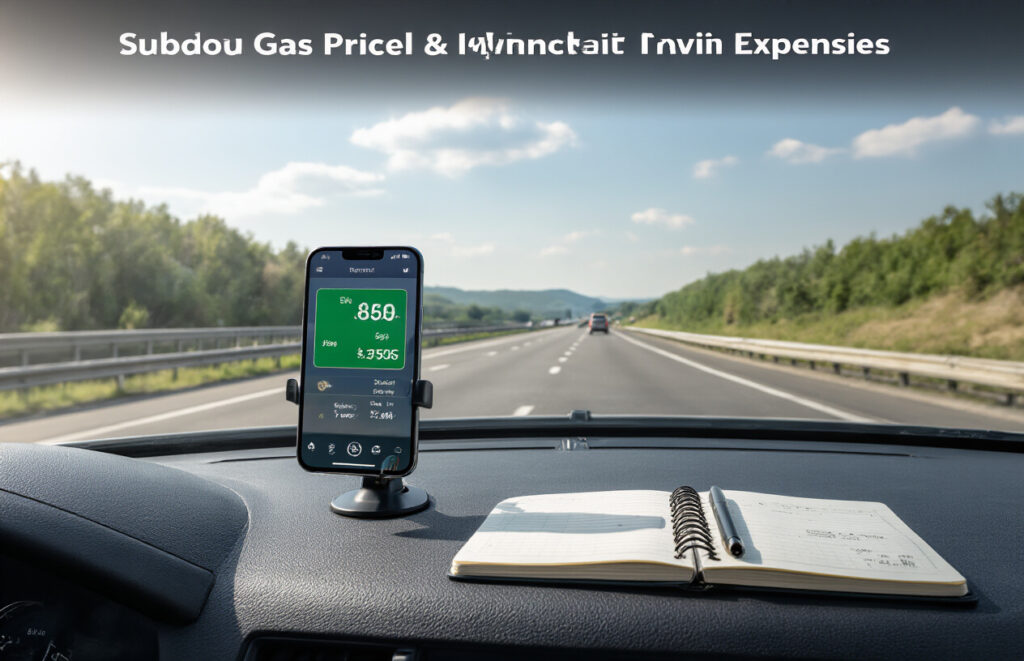
A. Best route planning tools to minimize expenses
Gone are the days of paper maps and guesswork. Smart route planning can literally save you hundreds on a cross-country adventure.
Google Maps is obvious, but have you tried Roadtrippers? This gem lets you plot your journey and shows attractions, restaurants, and lodging options along the way—with price filters that keep you from accidentally blowing your budget on that fancy hotel.
Waze isn’t just for avoiding traffic. It consistently finds cheaper gas stations and alternate routes that burn less fuel. One cross-country driver I know saved over $200 just by following Waze’s gas recommendations.
For the truly budget-conscious, try GasBuddy. It’s not pretty, but it works. You can plan your entire route around the cheapest fuel stops—critical when gas prices can vary by 50 cents per gallon between stations.
B. Deal-finding apps for last-minute accommodations
HotelTonight is a game-changer. I once scored a $39 room in Nashville that normally goes for $129 because I booked at 4pm that day.
Airbnb isn’t just for planned stays. Filter by “Instant Book” and you’ll find places available tonight, often cheaper than hotels in the same area.
Campendium and Hipcamp connect you with affordable camping spots, some as low as $5 a night. Free spots too!
The Walmart app isn’t just for shopping—use it to find locations that allow overnight parking in their lots. It’s not glamorous, but it’s free.
C. Fuel optimization technology
Your phone can seriously cut your gas bills.
Upside (formerly GetUpside) gives you cash back on gas purchases—I’ve gotten up to 25 cents back per gallon at participating stations.
Fuelio tracks your fuel economy and shows you how your driving habits affect consumption. Most people don’t realize that driving 65 mph instead of 75 mph can improve fuel efficiency by up to 15%.
If you’re driving an older car, grab an OBD-II scanner like FIXD that plugs into your car’s diagnostic port. It’ll tell you if something’s killing your fuel economy before it becomes a bigger problem.
D. Budget tracking tools to stay on course
Road trips have a way of destroying budgets. Fight back with these tools.
Splitwise is fantastic if you’re traveling with friends. It tracks who paid for what and settles everything at the end without awkward money conversations.
Trail Wallet was built specifically for travelers. Set a daily budget and watch the app notify you when you’re getting close to your limit.
PriceTracker scans your email for receipts and automatically categorizes expenses, showing exactly where your money’s going. Spoiler: it’s probably food.
YNAB (You Need A Budget) takes more setup but gives you ridiculous control over your spending. Users typically save $600 in their first two months—enough for another road trip!
Timing Your Trip for Maximum Savings
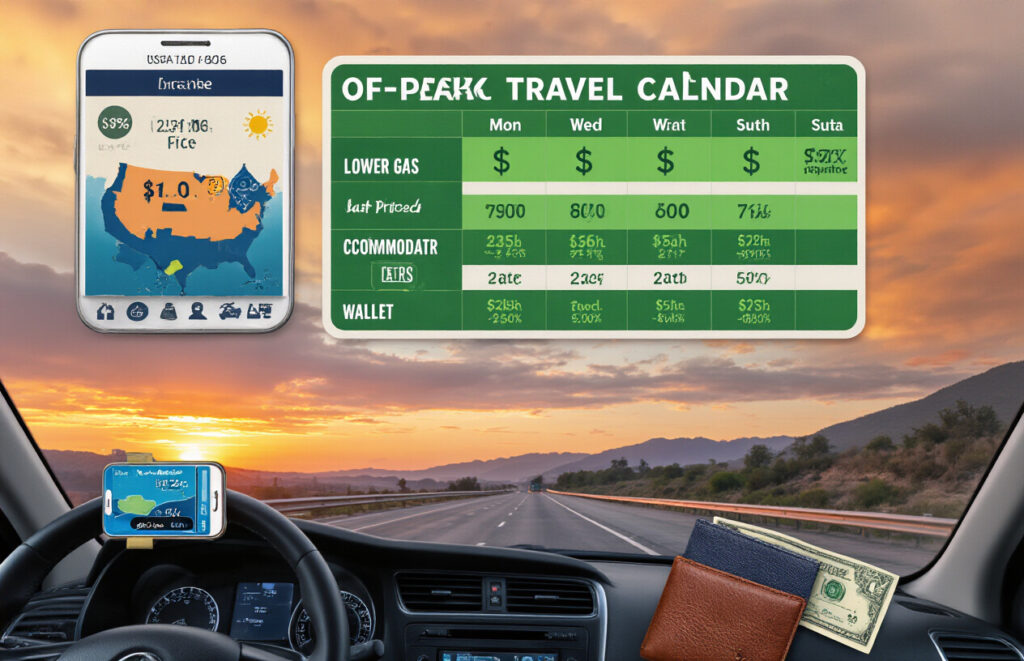
Best months for regional travel
Timing is everything when you’re pinching pennies on a cross-country adventure.
The sweet spot for most U.S. regions? Shoulder seasons. That’s April-May and September-October, when you’ll dodge both peak tourism prices and extreme weather.
The Southwest deserts? Brutal and expensive in summer. Visit in March when wildflowers bloom and temperatures hover in the 70s. You’ll pay about 30% less for the same Motel 6 room that would cost
$89+ during summer.
Northeast fall foliage hunters, skip October’s premium pricing. Early November offers similar views at half the accommodation costs. I’ve scored $65 rooms in Vermont that would’ve been $140 just two weeks earlier.
For the Pacific Northwest, September delivers summer-like weather without summer crowds or prices. Gas typically drops 10-15 cents per gallon after Labor Day too.
The Southeast? January-February brings mild 60-degree days and hotel rates slashed by 40% compared to spring break madness.
Weekday vs. weekend cost differences
This isn’t rocket science, but the numbers might shock you.
Staying Monday through Thursday can save you serious cash:
| Expense | Weekend Cost | Weekday Cost | Potential Savings |
| Hotels | $129-159 | $79-109 | Up to 45% |
| Attractions | Full price | Often discounted | 10-25% |
| Restaurants | Packed, full price | Specials, no wait | 15-30% |
Taking advantage of local events without premium pricing
Small towns throw amazing festivals year-round. The trick? Stay in the next town over.
During Albuquerque’s Balloon Fiesta, hotels jack rates up 300%. Twenty minutes away in Bernalillo? Regular prices.
Research free admission days at museums and national parks. Many offer monthly free days or evening discounts.
Street fairs and farmers markets deliver authentic local experiences without admission fees. Plus, you’ll find cheaper meals than tourist trap restaurants.
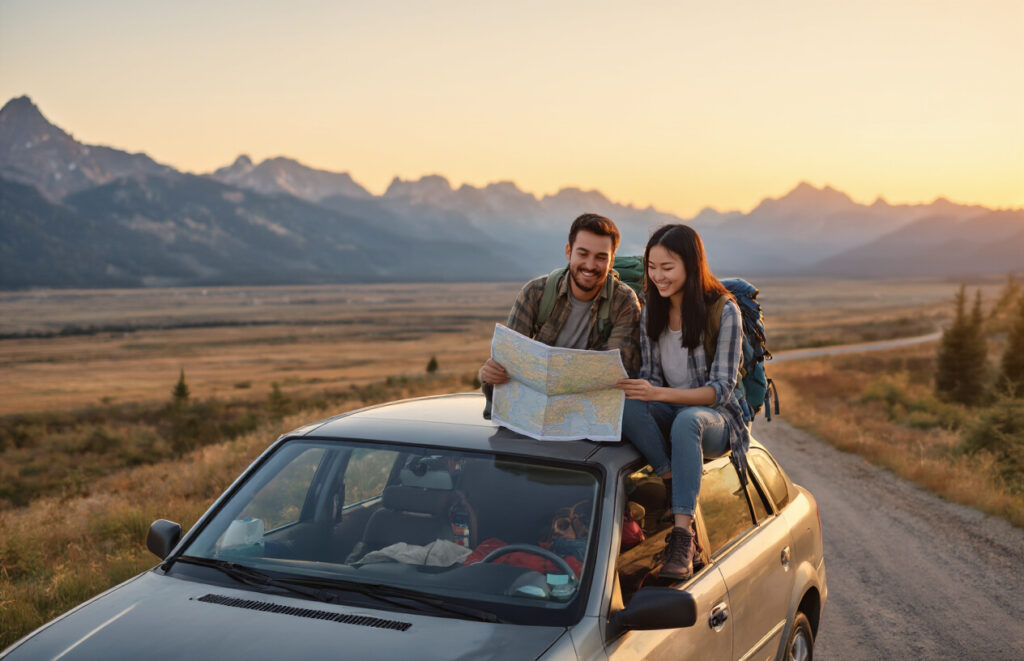
Embarking on a cross-country American road trip doesn’t have to drain your bank account. By strategically planning your route, seeking affordable accommodations, and implementing fuel-saving strategies, you can experience the beauty of America while keeping costs manageable. Coupled with smart food choices, free or low-cost attractions, and leveraging travel apps, a budget-friendly adventure becomes entirely possible. Remember that timing your journey during shoulder seasons can lead to
significant savings on both accommodations and attractions.
Your American road trip awaits – full of breathtaking landscapes, diverse cultures, and unforgettable memories that don’t require a fortune to experience. Start planning today, embrace the freedom of the open road, and discover that some of life’s most enriching experiences come from simple adventures pursued with careful planning rather than extravagant spending. The memories you’ll create will far outweigh the money you’ve saved.
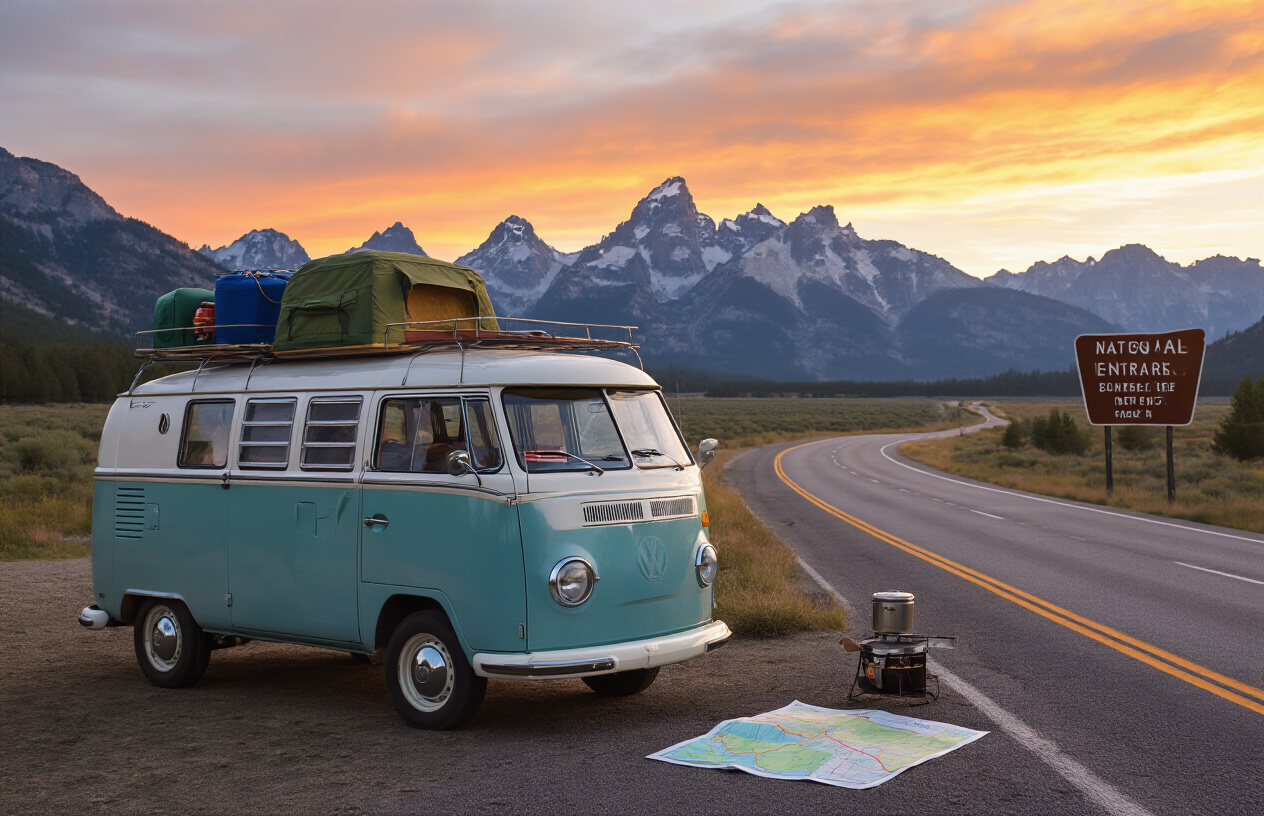
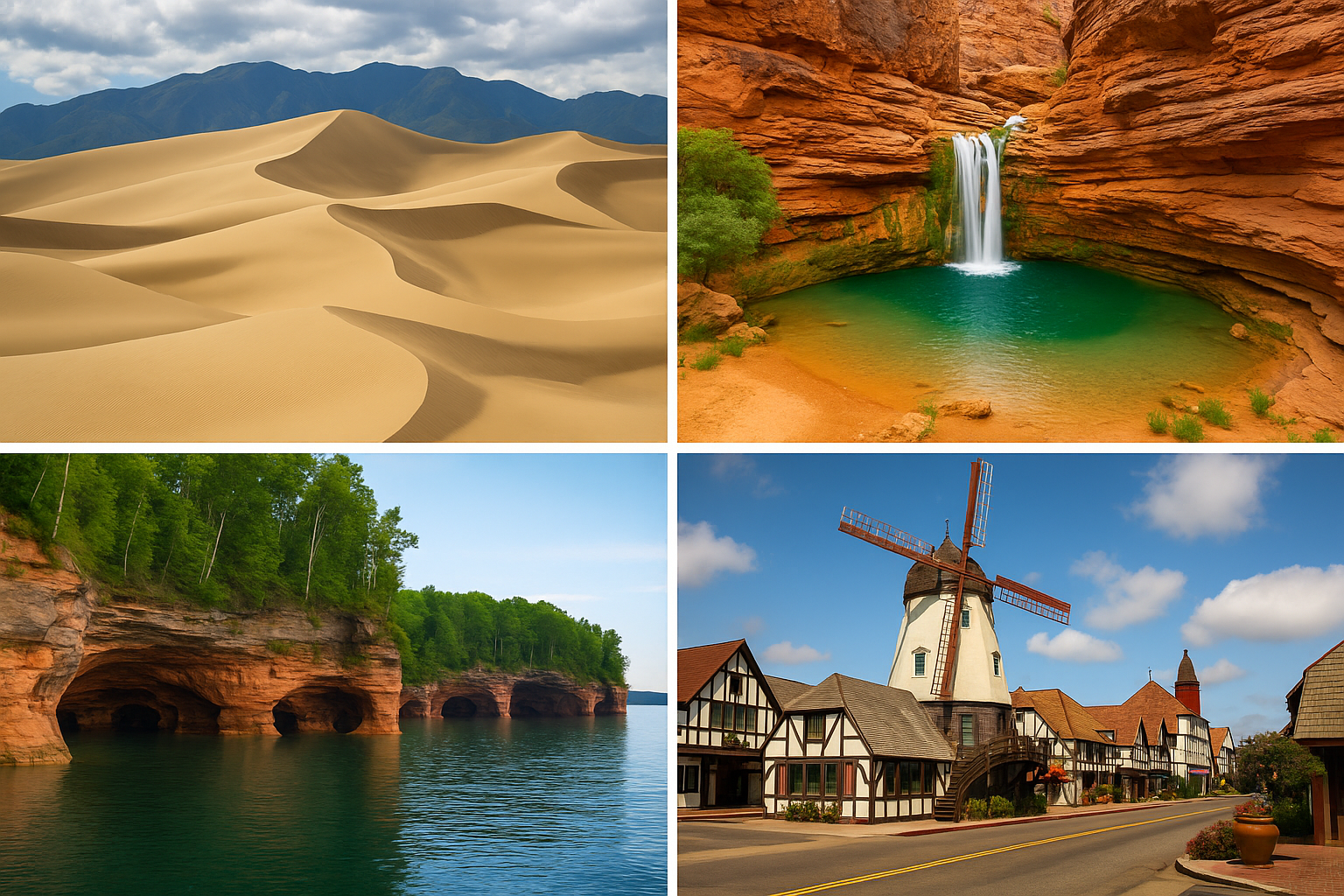
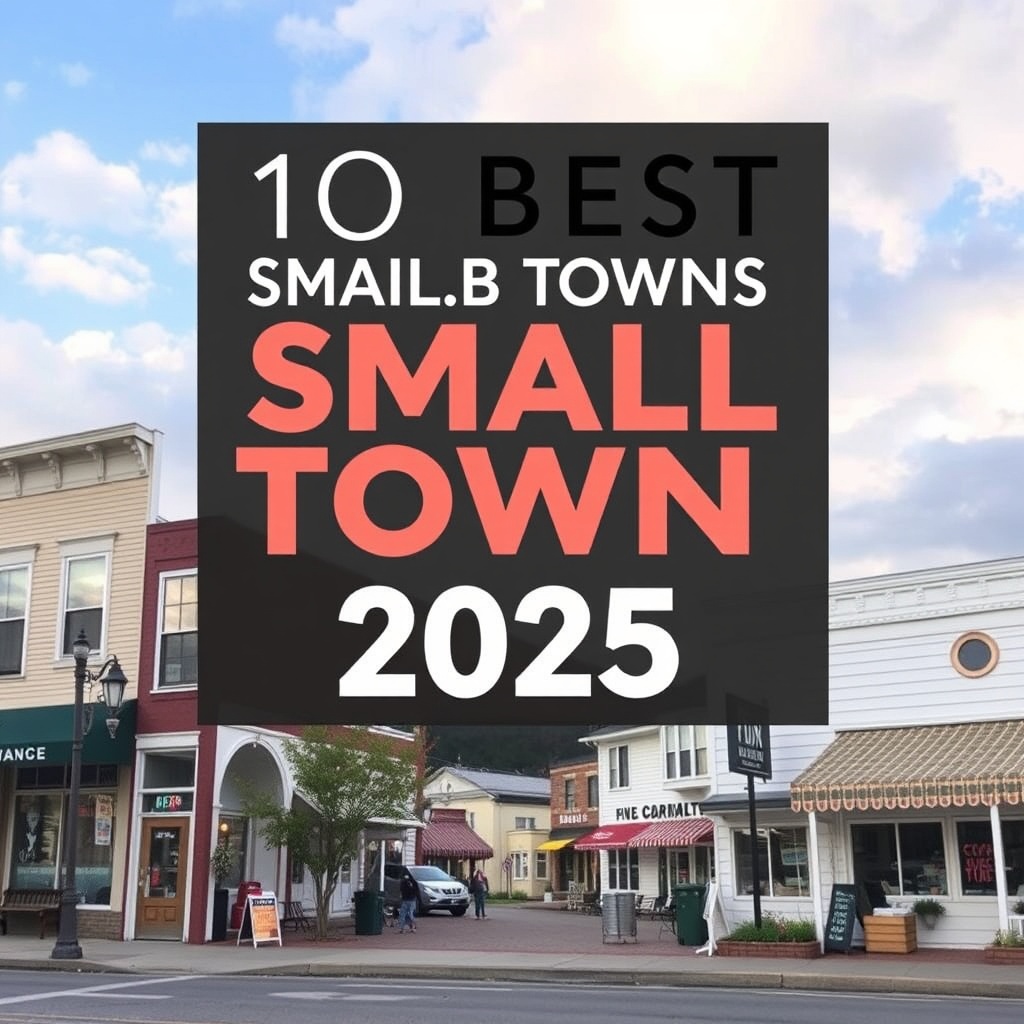

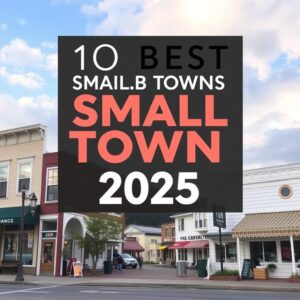
Post Comment